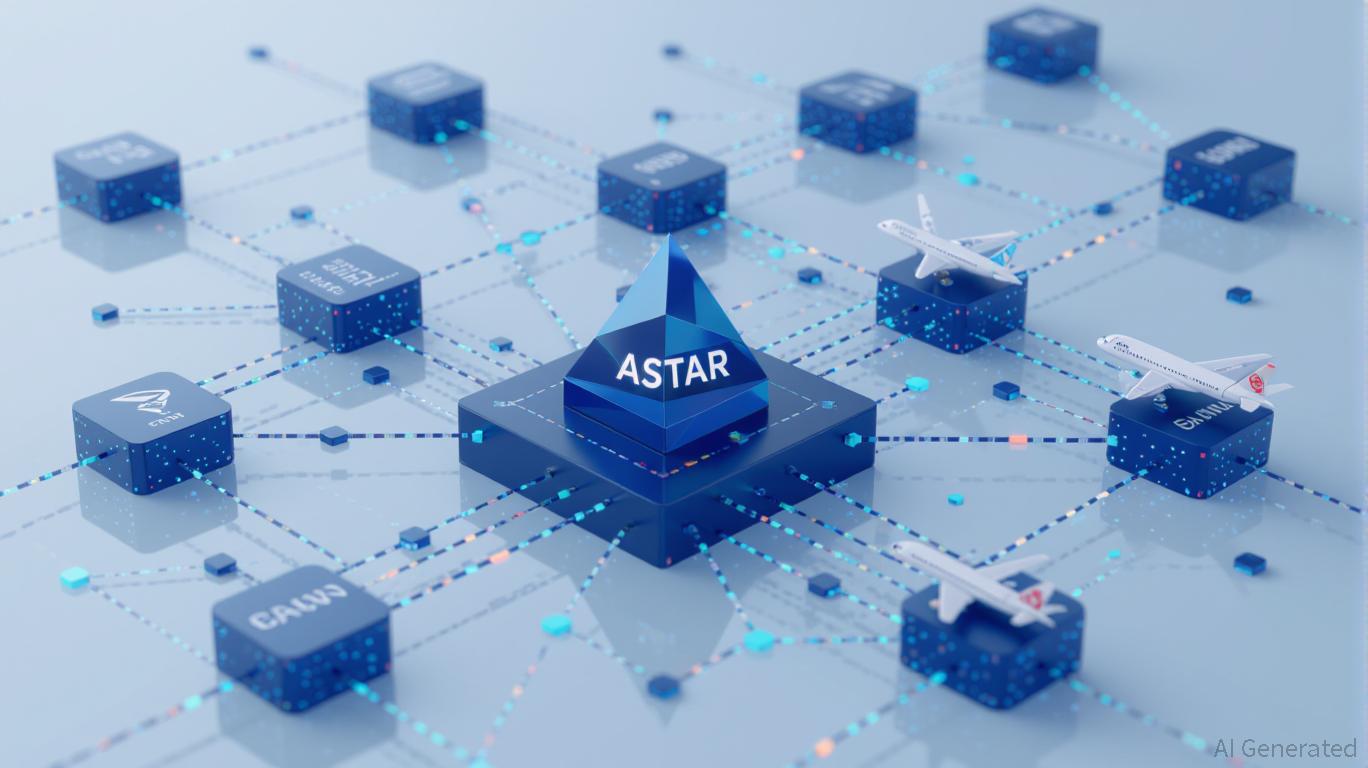Astar (ASTR) Price Rally: Blockchain Compatibility Fuels Institutional Uptake in 2025
- Astar (ASTR) surged 120% in October 2025 due to blockchain interoperability focus and institutional adoption. - Astar 2.0 upgrades and partnerships with Sony , Casio, and Japan Airlines enhanced enterprise cross-chain solutions. - $3.16M institutional token purchase and Chainlink CCIP integration validated Astar's hybrid blockchain infrastructure. - While DeFi milestones remain unproven, Astar's enterprise partnerships position it as a key player in institutional blockchain adoption.
Strategic Alliances and Technical Enhancements: Building Blocks for Expansion
Astar’s advancements in the third quarter of 2025 highlight its dedication to connecting decentralized technology with infrastructure suitable for institutional use. The introduction of Astar 2.0 represented a significant step forward, boosting both scalability and transaction capacity to address enterprise requirements, as outlined in a
A key factor in attracting institutional interest has been Astar’s adoption of Chainlink CCIP (Cross-Chain Interoperability Protocol). Utilizing Chainlink’s framework, Astar now enables cross-chain liquidity, granting users access to various blockchain networks without compromising on security or performance, as detailed in the Bitget report. This interoperability solution is especially attractive to organizations dealing with fragmented blockchain environments, as it streamlines asset movement and smart contract processes.

Institutional Trust and Shifts in Token Value
Confidence from major investors in Astar was further demonstrated by a $3.16 million acquisition of
Although in-depth expert commentary on ASTR’s valuation was limited in 2025, the overall market environment points to rising interest in projects centered on interoperability. A graphical review of ASTR’s price movement shows a 120% jump in October 2025 alone, surpassing many other Layer 1 platforms, according to Bitget. This growth mirrors the increasing appetite for blockchain solutions that appeal to both decentralized developers and institutional users.
Bridging the DeFi Integration Divide
While Astar has made notable progress with institutional partnerships, its achievements in DeFi integration have received less attention. Searches for updates on cross-chain DeFi or liquidity pool growth in 2025 produced little concrete information, indicating a stronger focus on enterprise collaborations over decentralized finance. Nevertheless, this does not lessen Astar’s appeal. By concentrating on interoperability and infrastructure for institutions, Astar is establishing itself as a hybrid blockchain—an environment where both DeFi and enterprise applications can thrive without direct rivalry.
Conclusion: The Road Ahead for Astar
Astar’s price rally in 2025 is driven not just by speculation, but by its alignment with institutional needs. The Astar 2.0 update, along with partnerships in logistics and cross-chain technology, has laid a solid groundwork for ongoing expansion. Although DeFi achievements are still emerging, the project’s focus on interoperability positions it to benefit from the next wave of blockchain adoption—one where enterprises and institutions take center stage.
For those considering investment, Astar’s progress reflects a larger movement: the merging of decentralized innovation with infrastructure designed for institutions. As interoperability becomes essential for widespread blockchain use, Astar’s network stands ready to take a leading role.
Disclaimer: The content of this article solely reflects the author's opinion and does not represent the platform in any capacity. This article is not intended to serve as a reference for making investment decisions.
You may also like
Institutional and individual investors are leading the transformation of cryptocurrency towards greater functionality and openness
- BlockDAG's $435M presale with $86M institutional backing highlights growing demand for transparent, utility-driven crypto projects. - IPO Genie's 320% presale surge and AI-powered private market access demonstrate institutional/retail appetite for governance-focused tokens. - Both projects' 40/60 vesting models and referral programs reflect maturing crypto markets prioritizing liquidity, scarcity, and community growth. - As Filecoin and Bonk show modest gains, utility-first platforms like BlockDAG and IP
Uniswap News Today: Uniswap's Burn Event, Inspired by Bitcoin Halving, Triggers Explosive Bull Rally
- Uniswap's UNI token surged 30% in 24 hours as the "UNIfication" governance overhaul introduced fee-switch mechanisms and token burns to create deflationary pressure. - The proposal, led by founder Hayden Adams, redirects trading fees to UNI holders and burns 100 million tokens, drawing comparisons to Bitcoin's halving events. - BitMEX co-founder Arthur Hayes invested $244,000 in UNI post-hiatus, amplifying market confidence while analysts predict potential $50 price targets if the proposal passes. - UNI'
Noomez's Scarcity Engine: Creating Value for Crypto's 2025 Bull Market
- Noomez ($NNZ) gains traction with a 28-stage presale using escalating prices, permanent token burns, and liquidity locks to create scarcity and 1000x return potential. - The deflationary model includes 280B fixed supply, 50% allocated to presale, with Vault Events at stages 14/28 triggering additional burns and airdrops. - Transparency features like the Noom Gauge dashboard and 15% liquidity locks, plus 66% APY staking rewards, differentiate it from speculative meme coins. - Stage 3 shows 51% price growt

Public Company's $IP Token Reserve Marks the Beginning of a Programmable IP Economy Era
- Crypto.com partners with IP Strategy, first public company to use $IP tokens as primary reserve asset. - Agreement includes custody, trading, and staking for 52.5M $IP tokens valued at $230M, boosting institutional IP token adoption. - Partnership enables regulated exposure to $80T programmable IP economy via Story Protocol's blockchain infrastructure. - Executives highlight infrastructure's role in securing IP assets while risks like liquidity and custody execution remain critical concerns.
